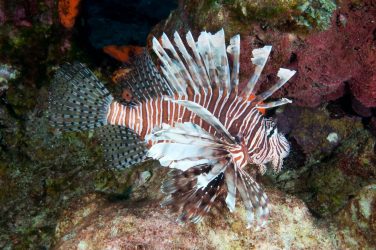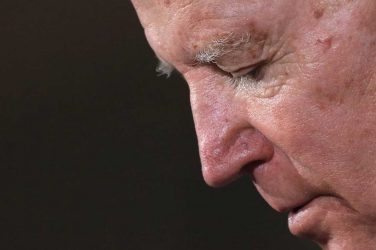A major initiative for the restoration of degraded areas in the Brazilian Amazon calls for the restoration during the next six years of almost 30,000 hectares, which corresponds to an estimated 73 million trees.
This largest-ever forest restoration in Amazonia is the result of a partnership among the Brazilian Ministry of Environment (MMA), the Global Environment Facility (GEF), the World Bank, the Brazilian Fund for Biodiversity (FUNBIO), Conservation International (CI-Brasil), the socioenvironmental initiative adopted by Rock in Rio, and Amazonia Live.
Of the 73 million trees, 3 million on 1,200 hectares of the Amazon Forest would already have been restored by the initial contribution from Rock in Rio itself and by CI-Brasil, combined with spontaneous donations by the general public and support from festival sponsors and partners.
The additional 70 million are part of the goals of the Amazon Sustainable Landscapes Program, a joint effort by the MMA, GEF, World Bank, FUNBIO, and CI-Brasil to expand the area of the forest being restored, promote sustainable use of natural resources, and strengthen the network of Conservation Units in the Brazilian Amazon.
It is anticipated that 28,000 hectares of degraded areas will have been restored under the Amazon Sustainable Landscapes Program by 2023. Different methods will be applied, such as: enrichment of existing secondary forests, seeding of selected native species, conducting and/or fostering natural regeneration and, when necessary, direct planting of native species.
The areas selected as priority for the project restoration actions are the southern regions of the states of Amazonas, Rondônia, Acre, and Pará.
Amazonia Live was born in 2016 out of the commitment by the Rock in Rio Festival to plant one million trees in the Amazon in partnership with FUNBIO and the Socioenvironmental Institute (ISA) and to publicize the importance of preserving Amazonia in achieving equilibration of the planet.
The platform grew rapidly after CI-Brasil entered as a foreign partner, which meant that the number rose to two million trees at the headwaters of the Xingu River, and with the entry of the Amazon Protected Areas Program (APRA) that supported the acquisition of one million seedlings of natural species for use in restoring degraded areas within the Conservation Units in the state of Amazonas.
Declarations by Partners
“Brazil can no longer live with the old benchmark for environmental degradation. The partnership between the Amazon Sustainable Landscapes Program and Amazonia Live platform is yet another demonstration of the new page we are now writing, with different social actors, united in the cause of restoration of the Amazon forest,” said José Sarney Filho, Minister of the Environment.
“The Amazon plays a critical role in global climate regulation as well as in the region’s environmental and economic prosperity, and is the largest biodiversity repository on the planet,” said Naoko Ishii, GEF CEO and Chairperson. “We are uniting for an integrated, coordinated approach and for the sustainable management of a significant portion of the Amazon biome.”
“Climate change is a serious threat to world development. With the Amazon Sustainable Landscapes Program, the World Bank is helping Brazil demonstrate that it is possible to preserve the forest, mitigate the impacts of climate change, and at the same time strengthen the local communities. The partnership with Amazonia Live enables us to share those good practices with an even larger public,” said Martin Raiser, World Bank Country Director for Brazil.
“For FUNBIO, participating in the first stage of Amazonia Live, in partnership with the Socioenvironmental Institute, has been an outstanding experience. For 21 years now, we have been supporting some of the most important projects in Amazonia, among them the ARPA Program, the world’s largest tropical forest protection initiative. ARPA is now the standard and model for other Latin American countries,” said Rosa Lemos de Sá, secretary general of FUNBIO.
“We are fully confident that this effort will produce results. We at the ISA, along with the Xingu Seeds Network, are promoting the planting of 1.5 million trees in degraded areas in the basins of the Xingu and Araguaia Rivers. That is our commitment and we are ready to expand it,” says Adriana Ramos, coordinator of the Socioenvironmental Institute (ISA).
“Amazonia is our greatest asset and vital to the well-being of the peoples on our planet. We are running out of time and now is the time for acting together if we are to reverse the history of destruction in the region and write a new chapter for Amazonia in Brazil,” said Rodrigo Medeiros, Vice President of CI-Brasil. “The task is challenging, but it is by working in the spirit of the partnership and in a well-coordinated fashion, as we are doing under this initiative, that we will achieve success.”
“For the first time we are adopting a single cause worldwide that will be promoted in all the countries where Rock in Rio is present and will extend through several editions of the event. With this action, we will attract the attention of the whole world to an urgent problem and show that it is possible, especially, to plant hope. We started with one million trees; today we want 73 million. This partnership between Amazonia Live and the Amazon Sustainable Landscapes Program shows that it is worthwhile to dream, that each of us can do our part and together, make the difference,” said Roberto Medina, president of Rock in Rio.
For more information, visit:
www.amazonialive.com.br
www.mma.gov.br
http://www.worldbank.org/en/country/brazil
www.funbio.org.br
www.conservacao.org.br
www.socioambiental.org/













